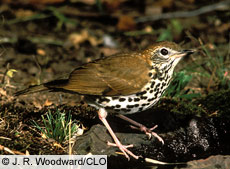Blackthorn
Straif
Shares its cycle with Ngetal

The Letter

The Tree ~ Straif ~ Blackthorn (sloe)
Color ~ Sorcha ~ bright, brilliant white or yellow

Bird ~ Smolach – thrush
Goddess ~ Scathach ~ Cailleach Bera
Note ~ #d
Planet ~ Uranus
Word oghams ~ strongest of red, increase in secrets, seeking clouds
Message ~ alchemy, secret knowledge, occult mysteries, reversal of fortune, change, prepare for the unexpected
"Blackthorn, little thorny one, dark provider of sloes."
Species ~ Prunus spinosa
Family ~ Rosaceae (Rose family)
Ogham ~ Straif
Planet ~ Saturn and Mars
The Blackthorn tree is esoterically known as both the Mother of the Woods and the Dark Crone of the Woods. Deities associated with straif are Scathach, Warrior Goddess of Winter and Punishments. Straif’s color is “bright” and the animals are wolf, dog, black cat, and toad.
Blackthorn is used in the making of magical rods, cudgels, shillelaghs, walking sticks, all things used to “ward off” evil or danger.
Straif is coupled with the moon month of Ngetal: October 28 through November 24, making it the Ogham of Samhain, the Feast of the Dead.
The Tree ~ The Blackthorn is a shrub that produces suckers, which can make a single plant an impenetrable thorny thicket. The thorns of this shrub provide a valuable defense in hedging. The Blackthorn is generally considered to be an expression of forces detrimental to humankind for its name means punishment and strife. It is the plant of slumber and death and a symbol of both punishment and protection represents the struggle of new life arising from the breakdown of old things. It is protected by spiritual beings called Lunantishees. The Blackthorn is known as the Black Rod, or Blasting Rod, of the malevolent Mage or Witch. They would carry staves of this wood as a walking stick, club, or weapon. These staves were renowned for their great magical power. It was also the magical weapon used to wound poppets and effigies of one's enemies.
Botanical Information
Blackthorn is a twisting hardwood tree or shrub with thorny black branches that grows to 10 feet. It blooms with small white flowers that usually appear before the purplish leaves. The bluish-black fruit has sour flesh and a large stone. Blackthorn is related to the cultivated plum. It grows wild in Western Europe on scrub and in woodland clearings. Harvest flowers, bark, leaves and fruit in May and September.
Blackthorn is a deciduous tree; its leaves turn yellow in autumn and fall off in winter, leaving a stark twisted black skeleton.
It is found throughout the British Isles, Blackthorn dwells on the edge of woodlands forming dense thickets and hedgerows, often with Hawthorn and Elder.
The bark is rough and scaly, and bright orange just under the dark gray surface. The thickets are dark, dense and thorny, the branches and twigs twisting and branching out in all directions. The sapwood is light yellow and the heartwood is brown.
The tree bears wicked long sharp thorns, which if pricked, can cause problems.
The tree blooms musk scented small, delicate, white flowers with oval petals clustered into a star shape in early spring. The blossoms, which are thin and rounded with toothed edges, appears before the leaves in early March, and bloom for several months. They are usually white, but occasionally pink, with red tipped stamens.
The leaves are small dark green ovals which turn yellow before they fall off in winter.
The berries are small, blue-black, sometimes deep purplish, round globular coming in the summer, ripening after the first frost. The sloe berry juice can be used for ink or a strong red dye.
Medicinally it can be used as an astringent, a laxative, to reduce fever and to purify the system.
The Blackthorn’s fruit, the sloe berry, ripens and sweetens after the first frost. An alcoholic drink, Sloe Gin is made from this small dark blue berry, which is used both medicinally and magically.
Sloe berries are very tonic bitters. They are astringent, and stimulate the metabolism, clean the blood, and are used as a laxative and diuretic. They help with indigestion, eczema, herpes, allergies, colds, catarrh, neurosis, weak heart, kidney stones, skin, bladder, and prostrate problems. Blackthorn helps absorption of energies necessary for life, stabilizes emotions brings hope and joy. The leaves can be boiled into a decoction that, once cooled, is an excellent mouthwash and gargle for those suffering from tonsillitis or laryngitis. It can also be used as a soothing eye bath. A tea made from the powdered bark has a calming effect on the nerves. They can be prepared as a juice, syrup, jelly, jam, wine or sloe gin beverage. They are excellent when combined with apples in a jam.